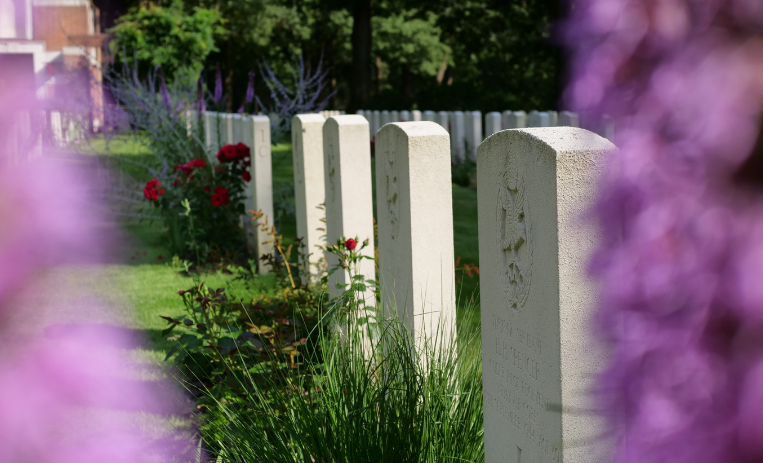15 June 2021
Century old Yew Trees get helping hand
At Tyne Cot Cemetery and Memorial are ten yew trees that stand between the Cross of Sacrifice and the Stone of Remembrance. Now, nearly one hundred years on, special care and attention is required to help the trees survive.

The trees have been affected by the extreme weather conditions in recent years, coupled with increased footfall and equipment usage which compacts the soil around the trees.
To help preserve the trees, our Area Tree Team in Belgium have been loosening the soil around the trees to reduce the density of the soil. This, combined with widening the borders around the trees, makes it easier to the for the trees’ roots to spread and absorb the nutrients in the soul.
The team have also been enriching the soil with a special liquid compost which is produced in our CWGC compost farm, just outside Ypres, near Bedford House Cemetery. This mixture contains bacteria and fungi that restore nutrients to the soil to feed the trees.


Jimmy Clynckemaillie, Horticultural Supervisor for the Ypres Salient, and Pascal Knockaert, Head Gardener of the Area Tree Team, who have both worked on the project, spoke about how important it is to protect and conserve these trees:
“The historical, but certainly also the emotional value of authentic elements in our cemeteries cannot be matched. These yew trees were already here when parents, children and widows of the deceased soldiers came here to mourn. It is important to do everything we can to preserve these trees for as long as possible.”

Tyne Cot Cemetery was designed by Sir Hubert Baker and contains close to 12,000 casualties of the First World War, 3606 of which are identified. The north-eastern boundary of Tyne Cot Cemetery is formed by the Tyne Cot Memorial and commemorates nearly 35,000 servicemen from the United Kingdom and New Zealand who died in the Ypres Salient after 16 August 1917 and whose graves are not known.


